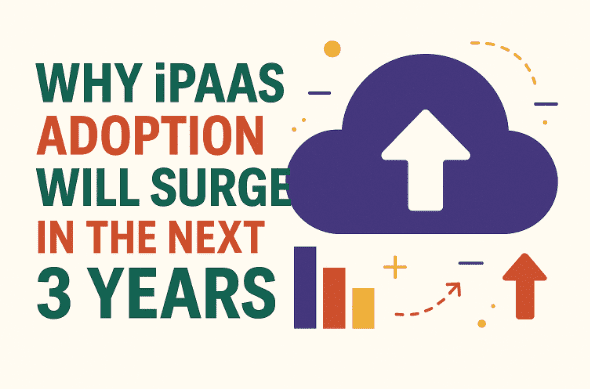In 2025, iPaaS is no longer a niche tool for tech-forward firms—it’s becoming a strategic necessity. As companies increasingly rely on multi-cloud architectures, edge services, and hybrid environments, the demand for a robust integration backbone is exploding. Businesses are realizing that connecting systems isn’t enough: they need a platform that can scale, adapt, and reduce risk. In that context, a modern Salesforce integration platform is becoming one of the most cited entry points for enterprises adopting iPaaS, because it bridges CRM with operational systems in a reliable, scalable way.
Over the next three years, iPaaS adoption will not just rise—it will shift from being “nice to have” to being foundational. Below are the key forces driving this growth, and how companies can prepare to ride the wave.
Growing Complexity in Enterprise Tech Stacks
Enterprise architecture in 2025 is more complex than it has ever been. There’s more diversity of applications—SaaS, on-prem systems, microservices, IoT, event streaming. Each new tool brings data, APIs, and events that must communicate. Without an integration layer capable of managing heterogeneity, chaos ensues.
iPaaS provides that central abstraction layer. Instead of custom point-to-point code, teams can define connectors, mappings, and workflow logic in a platform. That means less technical debt, more maintainability, and fewer integration failures.
Demand for Real-Time Data and Declarative Logic
Batch jobs and nightly ETL (Extract, Transform, Load) are increasingly inadequate. Modern business demands real-time or near-real-time synchronization: inventory updates, customer interactions, order status changes—all need to reflect instantly across systems.
iPaaS tools are built for event-driven architectures. They operate on message queues, event streams, and webhook triggers. That real-time capability is critical for speed, accuracy, and responsiveness. As more businesses shift to live data, iPaaS will naturally become the backbone.
Faster Time to Market and Lower Developer Load
Historically, integrations have been expensive and high-risk because of custom code, debugging, versioning, and maintenance. With growing demand for agility, development teams don’t want to spend 50% of their time on connectors. They want to build features.
iPaaS platforms abstract a lot of the repetitive plumbing: error handling, retry logic, schema transformations, protocol conversion, logging. Engineers can focus on logic instead of boilerplate. This efficiency gain accelerates feature delivery and shortens project cycles.
Demand for Scalability, Stability & Observability
As integration use grows, reliability becomes non-negotiable. Failures in data sync can trigger business disruption—incorrect financial reports, missing orders, compliance violations. Enterprises demand stability, visibility, retry mechanisms, monitoring, and alerting built-in.
Modern iPaaS platforms offer dashboards, dashboards of flows, alerting, error handling and versioning. They become the control plane for integrations. That visibility and operational maturity attract mid-to-large organizations to adopt iPaaS over ad hoc integrations.
Regulatory and Compliance Pressures
Regulation is tightening everywhere: data privacy (GDPR, CCPA), financial reporting, audit trails, industry-specific compliance (healthcare, finance). Under these constraints, every data movement must be secure, logged, and auditable.
iPaaS platforms support encryption, access controls, version auditing, and data governance. That compliance-ready infrastructure reduces risk. As regulators push for stricter enforcement, adoption of platforms that provide built-in compliance will rise.
Convergence with AI, Analytics, and Decision Systems
Data integration is foundational for anything higher-level like AI, analytics, and decision systems. An insight or prediction is only as good as the data feeding it. Disconnected silos, stale data, and transcription errors undermine analytics.
In the coming years, iPaaS will be viewed as more than integration: it will be the data backbone that powers ML pipelines, real-time dashboards, anomaly detection, and prescriptive workflows. Enterprises demanding intelligent automation will choose platforms that deliver both integration and data readiness.
Cloud-Native, Multi-Cloud, and Hybrid Environments
Many organizations are adopting hybrid cloud or multi-cloud strategies. Some systems reside on public cloud, others on private data centers or edge nodes. Maintaining integrations across these environments is complex.
iPaaS that supports hybrid and multi-cloud connectivity (through connectors, secure tunnels, infrastructure flexibility) becomes essential. As more businesses adopt hybrid architectures, the need for a flexible integration layer will push iPaaS adoption upward.
Ecosystem and Platform Effects
As more vendors support connectors and pre-built adapters, iPaaS becomes easier to adopt. When your core systems (ERP, eCommerce, CRM) already have out-of-box connectors for your iPaaS, the barrier to entry drops.
This ecosystem effect accelerates adoption. As usage scales, more developers and integrators build on the platform, creating a virtuous cycle. iPaaS will no longer be an experimental tool—it becomes part of the standard stack.
Cost Efficiency and Total Cost of Ownership (TCO)
At first glance, custom integration may appear cheaper. But over time, maintenance, debugging, upgrades, and scaling drive up costs dramatically. iPaaS leverages standardized flows, version control, and reuse, which reduces cumulative technical debt.
Especially for mid-size organizations growing fast, moving to iPaaS often shows ROI within months. As tool maturity improves and pricing models evolve (pay per volume or transaction), cost becomes a compelling reason to adopt.
Conclusion
iPaaS adoption will surge in the next three years because businesses can no longer accept slow, brittle, error-prone integrations. The combination of technical complexity, demand for speed, compliance, AI, and operational resilience ensures that integration platforms become central infrastructure, not optional add-ons.
If you’re assessing when to jump in, now is the moment. Evaluate platforms that provide robust connectors, observability, governance, and flexible deployment modes. Choosing one of the best API integration platforms will prepare you for a future where integration is seamless, data is trusted, and growth isn’t held back by technical debt.





